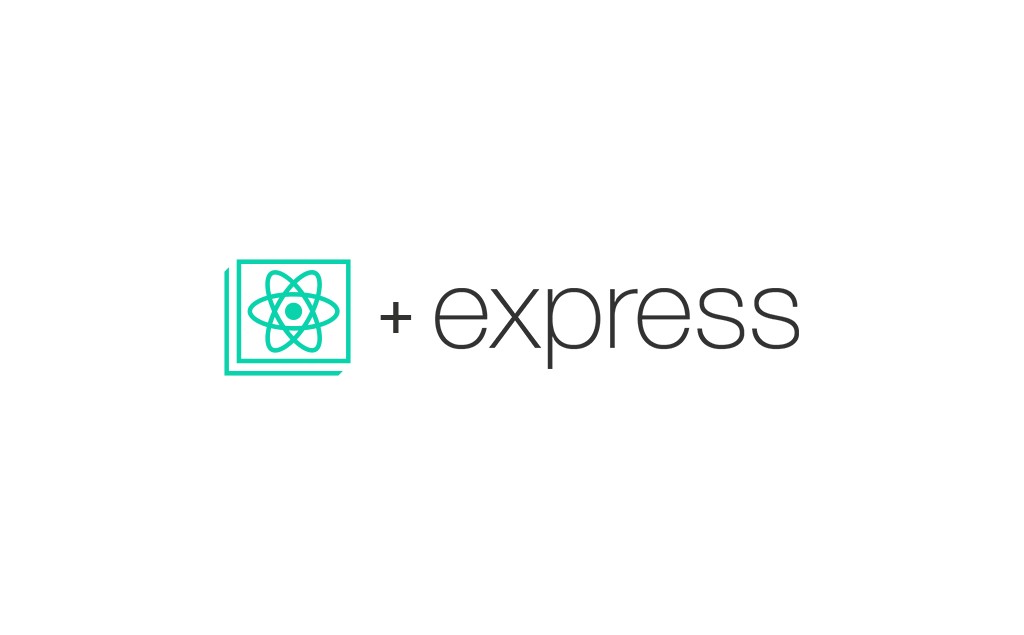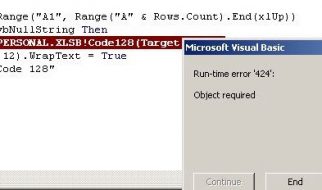
Have you ever wanted to build React app with Express API? This tutorial will show you how. You will learn how to create a simple React app and how to fetch data from different API endpoints. Then, you will learn how to build API with Express.js, how to create controllers and routes and how to implement them.
Introduction
The goal of this tutorial is to show you how to build React app with Express. To be more specific, you will learn three things. The first thing is how to create React app. The second thing is how to create Express API. The third thing is how to connect the React app with Express API.
Project structure
To keep everything tidy we will keep the whole app in a single directory. This directory will contain three folders: public for static files, server for express server and src for React app. The server directory will also contain three folders: controllers for API controllers, routes for API endpoints and data for mock data.
Aside to these folders there will be server.js file. This file will contain the configuration for your express server. The src directory will contain two folders: components for React components and css for styles. On the root level, there will be main file for your React app, the index.js.
If you use TypeScript in source folder will also be react-app-env.d.ts for TypeScript definitions and tsconfig.json. At least if you decide to generate your React app using create-react-app and TypeScript template. The last file in root directory will be buildScript.js. This file contains script for building the React app and moving it to server directory.
react-express-app/?? node_modules?? public? ?? favicon.ico? ?? index.html? ?? logo192.png? ?? logo512.png? ?? manifest.json? ?? robots.txt?? server? ?? controllers? ? ?? home-controller.js? ? ?? users-controller.js? ?? data? ? ?? users.json? ?? routes? ? ?? home-route.js? ? ?? users-route.js? ?? server.js?? src? ?? components? ? ?? app.tsx? ?? css? ? ?? index.css? ?? index.tsx? ?? interfaces.ts? ?? react-app-env.d.ts? ?? serviceWorker.ts?? .env.development?? buildScript.js?? package.json?? tsconfig.json
Note: If you don?t want the browser to automatically open every time you start your app there is a way to stop this. Create .env.development file in the root directory of your app, where is package.json. Inside this file write add BROWSER=none.
Creating React app
Let?s start with the front-end part, the React app as first. The fastest way to do this is by using create-react-app. Using this boilerplate is very easy. If you use npm you can use npm init react-app react-express-app –typescript. Another option is using npx. This will allow you to use the boilerplate without installing it.
To use npx use npx create-react-app react-express-app –typescript command. If you use yarn use yarn create react-app react-express-app –typescript. I will be using TypeScript, a superset of JavaScript. However, you don?t have to use it if you don?t want. If you don?t want to use it, omit the –typescript flag at the end of chosen command.
App component
For the purpose of this tutorial, we will do the work mostly in just one component, the App. Inside it, we will use useState to store short welcome message and array with users. We will fetch both these information from our express API. For fetching the data we will use native fetch API.
When the components mounts, we will always fetch the welcome message. To do this, we will create fetchApi function. Next, we will use useEffect() react hook and call fetchApi() from there. To ensure this hook will fire only once, on initial render, we will pass into the useEffect() hook as the second argument.
Unlike fetching the welcome message fetching users will not be automatic. Instead, we will create fetchUsers() function and add is as onClick handler on a button. So, when you click the button, app will fetch specific endpoint for users and update app state. This will mount simple table component listing all users and their data.
// src/components/app.tsx// Import necessary dependenciesimport React, { useEffect, useState } from ‘react’// Create interface for user object (TypeScript only)interface UserUI { id: string; username: string; name: string; email: string;}// Create App componentfunction App() { // Prepare state hook for welcome message const [welcomeMessage, setWelcomeMessage] = useState(”) // Prepare state hook for users list // Note: <UserUI> is for TypeScript // It specifies the shape of usersList state const [usersList, setUsersList] = useState<UserUI>() // Create async function for fetching welcome message const fetchMessage = async () => { // Use Fetch API to fetch ‘/api’ endpoint const message = await fetch(‘/api’) .then(res => res.text()) // process incoming data // Update welcomeMessage state setWelcomeMessage(message) } // Use useEffect to call fetchMessage() on initial render useEffect(() => { fetchMessage() }, ) // Create async function for fetching users list const fetchUsers = async () => { const users = await fetch(‘/users/all’) .then(res => res.json()) // Process the incoming data // Update usersList state setUsersList(users) } return ( <div className=”app”> <header className=”app-header”> {/* Display welcome message */} <p>{welcomeMessage}</p> {/* Button to fetch users data */} <button onClick={fetchUsers}>Fetch users</button> {/* Display table of users after fetching users data */} {usersList.length > 0 && <table> <thead> <tr> <th>ID</th> <th>Username</th> <th>Name</th> <th>Email</th> </tr> </thead> <tbody> {usersList.map((user: UserUI) => ( <tr key={user.id}> <td>{user.id}</td> <td>{user.username}</td> <td>{user.name}</td> <td>{user.email}</td> </tr> ))} </tbody> </table>} </header> </div> )}export default App
Note that the fetchMessage() uses text() to process data from API while the fetchUsers() uses json(). This is on purpose. The ?/api? endpoint, we are going to create, returns a simple text. The ?/users/all? returns a json. Make sure to use correct method. Otherwise, you will run into issues.
Index
The index.tsx will stay pretty much the same as the default created by create-react-app boilerplate.
// src/index.tsx// Import necessary dependenciesimport React from ‘react’import ReactDOM from ‘react-dom’// Import App componentimport App from ‘./components/app’// Import stylesimport ‘./css/index.css’// Import service workersimport * as serviceWorker from ‘./serviceWorker’// Render App component in the DOMReactDOM.render( <React.StrictMode> <App /> </React.StrictMode> , document.getElementById(‘root’))// If you want your app to work offline and load faster, you can change// unregister() to register() below. Note this comes with some pitfalls.// Learn more about service workers: https://bit.ly/CRA-PWAserviceWorker.unregister()
Styles
In case of styles, we will add some general styles and resets such as proper box-sizing, no margin on body, font settings and some styles for users table. Other than that, feel free to add your own CSS styles to change how the React apps looks like.
/* src/css/index.css *//* General styles & resets */html,*,*::before,*::after { box-sizing: border-box;}html { font-size: 16px;}body { margin: 0; font: 1rem -apple-system, BlinkMacSystemFont, ‘Segoe UI’, ‘Roboto’, ‘Oxygen’, ‘Ubuntu’, ‘Cantarell’, ‘Fira Sans’, ‘Droid Sans’, ‘Helvetica Neue’, sans-serif; -webkit-font-smoothing: antialiased; -moz-osx-font-smoothing: grayscale;}/* Layout styles */.app { text-align: center;}.app-header { min-height: 100vh; display: flex; flex-direction: column; align-items: center; justify-content: center; font-size: calc(10px + 2vmin); color: #222;}/* Table styles */table th,table td { padding: 8px; font-size: 16px; text-align: left;}
Updating project workflow
The front-end part of our React app is ready. Now, before we start working on the API, the express sever, we need to make some updates to our workflow. We need to add some new dependencies and scripts.
Adding dependencies
The first thing we will need is to add new dependencies necessary for express API. The most important dependency is express. Then, we will also add some middleware. Middleware are functions that help you execute some very useful tasks in a very easy way. For example, they can help you parse request bodies, add response headers, compress HTTP responses, enable CORS, HTTPS and more.
The middleware we will add, and use, will be body-parser (parses HTTP request body), compression (compresses HTTP responses), cookie-parser (parses cookie header and populates req.cookies), cors (enables CORS) and helmet (enables HTTPS). Take a look at express docs for the full list of available middleware.
npm i express body-parser compression cookie-parser cors helmet# oryarn add express body-parser compression cookie-parser cors helmet
Aside to these we will also add some additional useful dependencies. These are concurrently, cross-env and nodemon. The concurrently will help us run multiple npm scripts at once. This is useful if you want to run your React app and express API at once in one terminal window.
The cross-env makes it easier to set, and use, Node environment variables that work on all platforms. Lastly, the nodemon. This dependency will make it easier to develop the express server because it can watch for changes in specific files or directories.
So, when you change something, you don?t have to restart the server. nodemon will automatically refresh/restart the server so you can continue working.
npm i -S concurrently cross-env nodemon# oryarn add -D concurrently cross-env nodemon// /package.json// …”dependencies”: { “body-parser”: “1.19.0”, “compression”: “^1.7.4”, “cookie-parser”: “^1.4.5”, “cors”: “2.8.5”, “express”: “4.17.1”, “helmet”: “^3.22.0”, “react”: “16.13.1”, “react-dom”: “16.13.1”},”devDependencies”: { “@testing-library/jest-dom”: “4.2.4”, “@testing-library/react”: “9.4.0”, “@testing-library/user-event”: “7.2.1”, “@types/jest”: “24.9.1”, “@types/node”: “13.9.5”, “@types/react”: “16.9.26”, “@types/react-dom”: “16.9.5”, “concurrently”: “5.1.0”, “cross-env”: “^7.0.2”, “nodemon”: “2.0.2”, “react-scripts”: “3.4.1”, “typescript”: “~3.8.3”}// …
Adding npm scripts
At this moment, your package.json contains only scripts for running, building, testing and ejecting the React app. We also need to add scripts for running express server, running both, the server and also the app in parallel and also for building the app.
First we will rename current script for running React app, the start, to start-front. The script for building, the build, to build-front. Next, we will add script for running the express server, start-server. This script will use cross-env to set Node environment variable and nodemon to run, and watch, the server.
Main task for building the app will be build. This will use Node to execute scripts in buildScript.js.
// /package.json// …”scripts”: { “build”: “node ./buildScript”, “start-server”: “cross-env NODE_ENV=development nodemon server/server.js –watch server/*”, “start-front”: “react-scripts start”, “build-front”: “react-scripts build”, “eject”: “react-scripts eject”, “test”: “react-scripts test”, “start”: “concurrently “npm run start-server” “npm run start-front” –kill-others”},// …
Setting proxy
There is one more thing to do. We need to add proxy. This will allow us to redirect any requests, such as fetching data, to our API to specific host and port. The important thing here is to use the same host and port your express is running on. In this tutorial we will run our express app on http://localhost:4000.
We need to use the same host and port and set it as proxy in package.json. Now, when we try to fetch /users/all app will automatically fetch http://localhost:4000/users/all.
// …”proxy”: “http://localhost:4000″// …
The whole package.json looks like this:
// /package.json{ “name”: “react-express-app”, “version”: “1.0.0”, “private”: true, “eslintConfig”: { “extends”: “react-app” }, “browserslist”: { “production”: [ “>0.2%”, “not dead”, “not op_mini all” ], “development”: [ “last 1 chrome version”, “last 1 firefox version”, “last 1 safari version” ] }, “proxy”: “http://localhost:4000”, “scripts”: { “build”: “node ./buildScript”, “start-server”: “cross-env NODE_ENV=development nodemon server/server.js –watch server/*”, “start-front”: “react-scripts start”, “build-front”: “react-scripts build”, “eject”: “react-scripts eject”, “test”: “react-scripts test”, “start”: “concurrently “npm run start-server” “npm run start-front” –kill-others” }, “dependencies”: { “body-parser”: “1.19.0”, “compression”: “^1.7.4”, “cookie-parser”: “^1.4.5”, “cors”: “2.8.5”, “express”: “4.17.1”, “helmet”: “^3.22.0”, “react”: “16.13.1”, “react-dom”: “16.13.1” }, “devDependencies”: { “@testing-library/jest-dom”: “4.2.4”, “@testing-library/react”: “9.4.0”, “@testing-library/user-event”: “7.2.1”, “@types/jest”: “24.9.1”, “@types/node”: “13.9.5”, “@types/react”: “16.9.26”, “@types/react-dom”: “16.9.5”, “concurrently”: “5.1.0”, “cross-env”: “^7.0.2”, “nodemon”: “2.0.2”, “react-scripts”: “3.4.1”, “typescript”: “~3.8.3” }}
Creating build script
I briefly mentioned that we will use customs script to build the React app. We will use this script in npm build script. Put simply, what this script does is it runs react-scripts build and then copies the whole build of the React app to ?./server/build? directory.
// /buildScript.jsconst fs = require(‘fs’)const fse = require(‘fs-extra’)const childProcess = require(‘child_process’)if (fs.existsSync(‘./build’)) { fse.removeSync(‘./build’)}// Run ‘react-scripts build’ scriptchildProcess.execSync(‘react-scripts build’, { stdio: ‘inherit’ })// Move app build to server/build directoryfse.moveSync(‘./build’, ‘./server/build’, { overwrite: true })
Building Express backend
Okay. React app is ready and dependencies and scripts are ready as well. It is time to create our simple express sever. Let?s get started.
Adding mock data
As you remember, the app contains function to fetch list of users. We need to get those data from somewhere. For the sake of simplicity, we will create a short json, in data directory, containing data of couple of users. When the React app fetch the /users/all endpoint, our express app will send this json as a response.
// server/data/users.json[ { “id”: “u0001”, “name”: “Leanne Graham”, “username”: “bret”, “email”: “[email protected]” }, { “id”: “u0002”, “name”: “Ervin Howell”, “username”: “antonette”, “email”: “[email protected]” }, { “id”: “u0003”, “name”: “Clementine Bauch”, “username”: “samantha”, “email”: “[email protected]” }, { “id”: “u0004”, “name”: “Patricia Lebsack”, “username”: “karianne”, “email”: “[email protected]” }, { “id”: “u0005”, “name”: “Chelsey Dietrich”, “username”: “kamren”, “email”: “[email protected]” }]
Creating Controllers
Next are controllers. One easy way to think about controllers is to imagine functions used to process requests on API endpoints. When your React app fetch some endpoint the response will be created by these functions, or controllers. For now, we will create two controllers, one for home (/api endpoint) and one for users (/users endpoint).
The controller for home will be very simple. It will contain only one function. This function will be used to process GET request to /api endpoint. As a response, it will send a simple message. This is the welcome message displayed in React app after App component mounts. It is where we use .text() to process the data from API.
// server/controllers/home-controller.js// Create controller for GET request to ‘/api’exports.homeGet = async (req, res) => { res.send(‘Welcome back commander.’)}
Controller for users will look like the previous. It will contain one functions to process GET requests. It will process request to /users/all endpoint. It will take the list of users, stored in users.json, and send it in json format as a response. This is the data we use to render the table of users. It is also where we use .json() to process the data from API.
// server/controllers/home-controller.js// Import json with list of usersconst users = require(‘./../data/users.json’)// Create controller for GET request to ‘/users/all’exports.usersGetAll = async (req, res) => { // res.send(‘There will be dragons, not posts.’) res.json(users)}
Creating Routes
When we have controllers. Now, we need to create routes. These routes will use specific controllers on specific API endpoints. Every request the React sends first goes through a route created for specific endpoint and type of request. It then applies correct controller that then handles the response.
We will need to create two routes, one for home (/api endpoint) and one for users (/users endpoint). In each router, we will import express framework and use it to create new router. We will then use this router, and get method, to will handle GET request coming to / endpoint.
It is also this router method, get in this case, that specifies which controller should be used on which endpoint. For the home (/api endpoint) we will set the router method to use the homeGet controller. As the last thing, we will export the router so we can later import it and use it in main server file.
// Import expressconst express = require(‘express’)// Import home controllerconst homeControllers = require(‘../controllers/home-controller.js’)// Create express routerconst router = express.Router()// Create rout between homeControllers and ‘/’ endpointrouter.get(‘/’, homeControllers.homeGet)// Export routermodule.exports = router
The router for users (/users endpoint) will look almost like the endpoint for home (/api). The difference is that now we will import usersController and usersGetAll() controller we created previously. Then, we will create new route for /all endpoint.
One important thing to remember is that we don?t use /users/all here, but only /all even though we are actually creating route for /users/all. The reason is that when we implement this router in the express app, in server.js, we implement it for /users endpoint.
The result of this is that all users routes defined here will be basically ?prefixed? with ?/users?. So, if we create route for /all endpoint here it will become /users/all. Express will automatically add the ?/users? to the /all route.
This is why, in the React app, we fetch /users/all endpoint instead of fetching /all endpoint and it works.
// Import expressconst express = require(‘express’)// Import users controllerconst usersController = require(‘./../controllers/users-controller.js’)// Create express routerconst router = express.Router()// Create rout between usersController and ‘/all’ endpoint// Note:// Main route (in server.js) for users// is set to ‘/users’// This means that all users routes// will be prefixed with /users’// i.e.: ‘/all’ will become ‘/users/all’router.get(‘/all’, usersController.usersGetAll)// Export routermodule.exports = router
Building the server
You are in the finale. This is the last thing we need to do to get our express server up and running. Now, we need to do few things. First, we will import express framework and middleware dependencies. Next, we import both routers, for home and users. After that, we will create variable for default port and create express app.
When we have this we can implement all middleware we have. We can do this by using app and its use() method. Here, middleware is passed as an argument. One thing to remember. We need to implement middleware before we implement routes, if we want the middleware to be applied on those routes. Put simply, middleware has to be placed above routes.
When we are done with applying middleware we can implement both routers. We do this also by using app and its use() method. In the case of routers, we will pass two arguments. The first will be the endpoint, i.e. /api and /users. The second argument will be router that should be used on each route.
The last thing we have to do is to launch this express server. This is done by using app and listen() method. This method takes one parameter, which is a port where the server should be running. You can also pass optional callback function. This can be useful for logging message that says that server started and where.
// Import express frameworkconst express = require(‘express’)// Import middlewareconst bodyParser = require(‘body-parser’)const cookieParser = require(‘cookie-parser’)const compression = require(‘compression’)const helmet = require(‘helmet’)const cors = require(‘cors’)// Import routesconst homeRouter = require(‘./routes/home-route’)const usersRouter = require(‘./routes/users-route’)// Setup default portconst PORT = process.env.PORT || 4000// Create express appconst app = express()// Implement middlewareapp.use(cors())app.use(helmet())app.use(compression())app.use(express.json())app.use(express.urlencoded({ extended: false }))app.use(cookieParser())app.use(bodyParser.json())if (process.env.NODE_ENV && process.env.NODE_ENV !== ‘development’) { app.get(‘*’, (req, res) => { res.sendFile(‘build/index.html’, { root: __dirname }) })}// Implement route for ‘/api’ endpointapp.use(‘/api’, homeRouter)// Implement route for ‘/users’ endpoint// ! Note:// ‘/users’ will prefix all post routes// with ‘/users’ => ‘/all’ will become ‘/users/all’app.use(‘/users’, usersRouter)// Implement route for errorsapp.use((err, req, res, next) => { console.error(err.stack) res.status(500).send(‘Something broke!’)})// Start express appapp.listen(PORT, function() { console.log(`Server is running on: ${PORT}`)})
Conclusion: How to Build React app With Express API
Congratulations, you?ve just built your own React app with express! I hope you enjoyed this tutorial. Let?s quickly recap what you did today. As the first thing, you created a simple React app. In this app, you created functions and used them, along with React hooks, to fetch data from different API endpoints and displayed these data.
Next, you extended the create-react-app boilerplate workflow with new scripts, dependencies and proxy. After that, you built the express server. You?ve created controllers, routes and implemented them, along with middleware, in your express app. Now, start your new React express app with npm run start or yarn start and build something.
If you liked this article, please subscribe so you don?t miss any future post.
A note from JavaScript In Plain English:
We are always interested in helping to promote quality content. If you have an article that you would like to submit to JavaScript In Plain English, send us an email at [email protected] with your Medium username and we will get you added as a writer.


